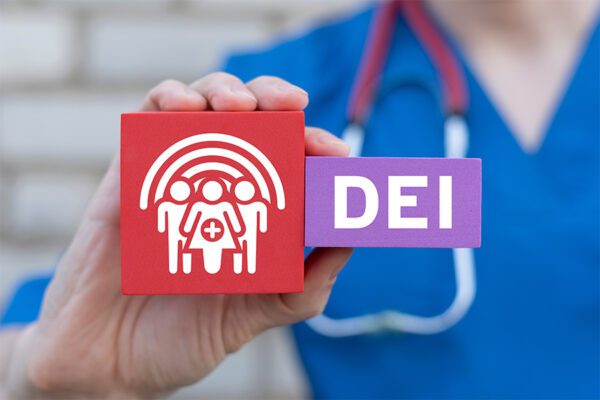Each member of a board of directors brings their professional and personal life experiences to the table, making it imperative for a nonprofit to elect an inclusive and diverse group. Since the board strategizes and supervises the organization’s direction, having varied experience, expertise and perspectives can put the nonprofit in a strong position to promote its mission, address health equity, plan for the future and manage risk.
Even though diversity and inclusion are beneficial to a board’s success, the majority of organizations remain largely unchanged. In fact, according to findings from “Leading With Intent: 2021 National Index of Nonprofit Board Practices,” 87% of chief executives and 78% of board members identify as Caucasian. The same report found that 66% of chief executives and 47% of board chairs are moderately or extremely dissatisfied with their board’s racial and ethnic diversity.
This article discusses the importance of adopting diversity and inclusion practices and how to implement them.
The Importance of a Diverse Board
Given the tremendous responsibility and decision-making power that boards have, embracing diversity, equity and inclusion can allow for positive outcomes to flourish. There are several benefits of having a diverse board of directors, including:
- Advancing Health Equity: A diverse board can better address health disparities and promote health equity by understanding and responding to the unique health challenges faced by different segments of the community.
- More accurate reflection of the served community: The board should reflect the community it serves so the organization can better access community resources through connections.
- Improved ability to respond to external influences: A diverse board may better navigate the changing environments of those served and the environments in which the board works.
- Better decision-making: A board with various backgrounds, experiences and perspectives can be better qualified to identify the full range of opportunities and risks the nonprofit faces when making a significant decision.
- Increased engagement: Creating a diverse board can prevent the board from becoming stagnant. Diversity can increase board member participation, fundraising and advocacy.
- Enhanced business practices: Implementing measures to improve diversity, equity and inclusion can increase nonprofit support and prevent discrimination within the organization.
How to Accomplish Board Diversity While Strengthening Health Equity
Diversity and inclusion may not happen overnight, but the following steps can help organizations create a more diverse and inclusive board while simultaneously advancing health equity:
- Identify and fill in the gaps: In addition to seeking diversity in professional expertise and leadership styles, prioritize recruiting candidates who bring perspectives relevant to health equity. Look for individuals with backgrounds in public health, community organizing, healthcare administration or advocacy for marginalized communities.
- Bring diversity topics to the forefront of board discussions: Incorporate discussions about health equity into board meetings to ensure that the organization’s efforts are aligned with addressing disparities in healthcare access and outcomes. This may involve reviewing data on health outcomes across different demographic groups and exploring strategies to mitigate disparities within the organization’s programs and services.
- Create a diversity statement: Develop a diversity statement that explicitly recognizes the role of the organization in promoting health equity. Emphasize the importance of diversity, equity, and inclusion in addressing systemic barriers to health and commit to actively working towards eliminating disparities in healthcare access, quality and outcomes.
With concerted effort, nonprofits can implement diversity, equity and inclusion initiatives that not only strengthen the board and organization but also contribute to positive health outcomes in the community. For more risk management guidance, contact us today.
Material posted on this website is for informational purposes only and does not constitute a legal opinion or medical advice. Contact your legal representative or medical professional for information specific to your legal or medical needs.




